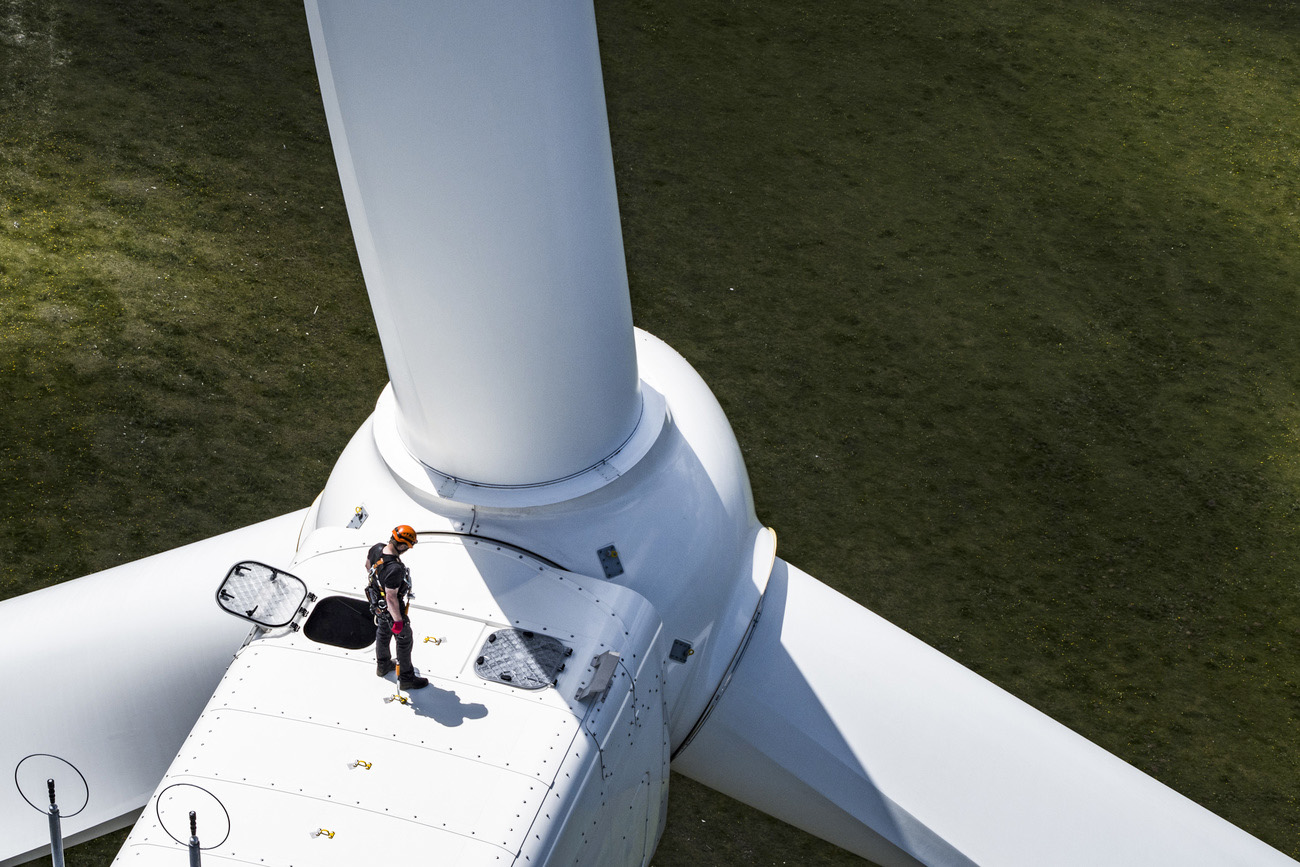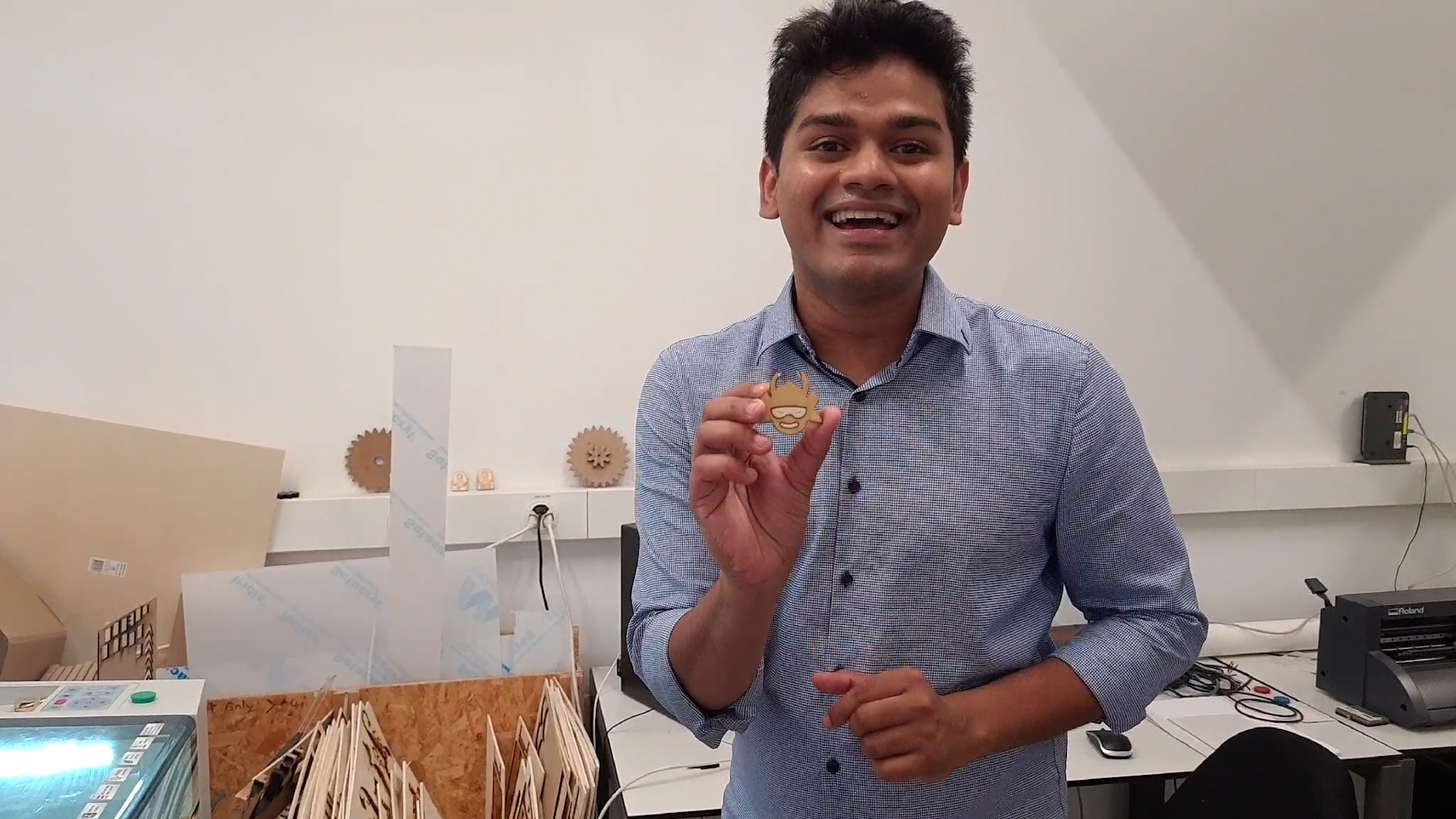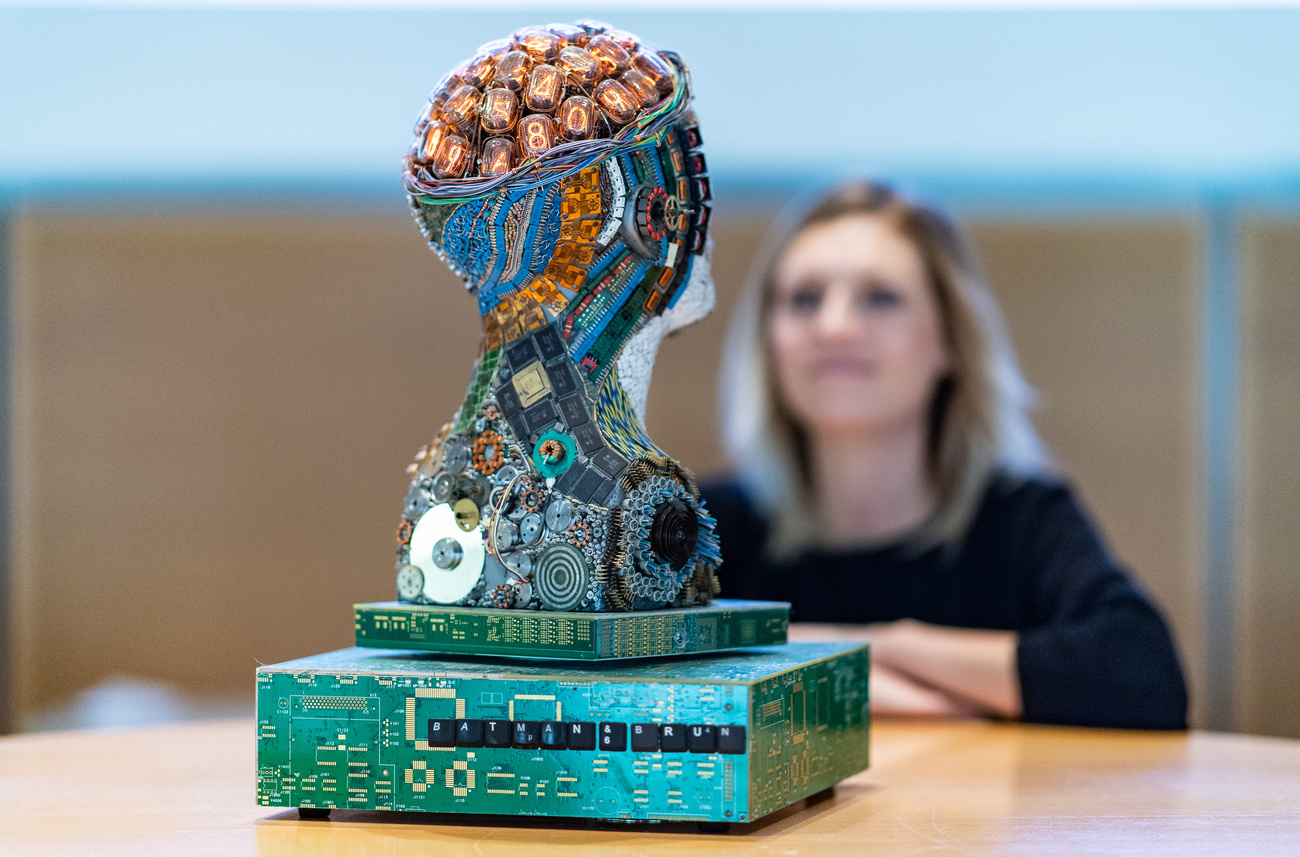How AI helps children with cleft lip and palate

The birth of a child with a cleft lip or palate, or both, can be very upsetting, especially as not all families can afford the high treatment costs. Now, Swiss researchers have developed a low-cost and risk-free way to simplify the medical procedures, offering relief for families in poor countries.
When doctor Andreas Müller at the University Hospital of Basel receives smartphone images of a new-born with a cleft lip and palate taken by a doctor from India, he puts them through special software on his computer to automatically create a digital model of the palate. He then sends the model back to doctors in India who can use a 3D printer to print out presurgical palate plates for infant patients.
In a workflow that would otherwise take weeks, a few clicks of a button create a personalised palate plate that can be fitted in newborns with facial birth deformities and prevent multiple expensive surgeries. The digital process developed by Müller, head of the Cleft Lip and Palate Treatment Centre at the University of Basel, and scientists at the Department of Computer Science at the federal technology institute ETH Zurich is now being tested in Indian and Polish clinics and could make better treatment possible, especially in low-income countries.
Cleft lip and palate are much more common than you might think: about one in 700 babies worldwide is born with a cleft lip and/or cleft palate, according to the non-profit organisation Smile TrainExternal link, which provides corrective surgery to children in 87 countries. This makes it one of the most common birth defects. The most frequent form is the cleft lip, where the upper lip does not form properly, leaving a gap. A cleft palate occurs when the palate (also called roof of the mouth) does not grow together during the foetal development.
But the complications of a cleft lip and palate go beyond the cosmetic. Children with untreated clefts can struggle with lifelong difficulties, including breathing, sucking, swallowing, and dental and speech problems. According to a studyExternal link published in the JAMA Pediatrics journal, individuals born with a cleft palate also tend to have more severe learning difficulties, anxiety disorders, autism spectrum disorders, and even a higher risk of mortality.
There’s no doubt that repair surgeries can significantly alleviate these difficulties. Since the middle of the 20th century, significant progress has been made in repairing clefts. However, children born with cleft lip and palate still have to undergo between two and four surgical procedures throughout their childhood and early adulthood.
Costly conventional methods
The cost of repair surgeries varies based on the type of cleft and the kind of treatment required. In Switzerland and the United States, it typically costs $5,000-10,000 (CHF4,700-9,400) per surgery, says Müller. In India similar surgeries and treatment cost $2,300-3,500. While this may seem relatively affordable compared to the cost of treatment in wealthy nations, for many families in low- and middle-income countries, it is far beyond their means. Although cleft lip and palate can occur in all ethnic groups, they are more common in people of Asian descent (approximately 1 in 500 births), followed by new-borns of Native American and Hispanic descent, according to the Nationwide ChildrenExternal link’s HospitalExternal link in the US.
Some doctors prefer to reduce the surgical intervention of closing the malformation of lip and palate from multiple steps to one. However, as Müller says, this can only be accomplished in collaboration with a multidisciplinary team. A paediatric dentist, a surgeon and an anaesthesiologist take the impression of a baby’s palate shortly after birth to create a plaster mould. An experienced dental technician handcrafts an individualised plastic plate based on the mould, then a qualified orthodontist implants the plate into the baby’s mouth and frequently adjusts it over several months. The plate closes the palate, which is open to the nose, making it easier for the baby to drink. After six to eight months, the baby’s cleft will have become narrower and the tongue’s position corrected enough to perform a single surgery to close it.
“But only a few teams could do this,” says Müller. “As health workers, we feel frustrated faced with the fact that such ‘luxuries’ are unavailable to many families in those countries with scarce healthcare resources, training, and a low number of healthcare workers.” Moreover, the operations are not without risk. As a baby’s respiratory system is not yet well developed, doctors risk blocking its airway when taking impressions with silicone material and causing suffocation – although this is very rare.
From photos to 3D printing
Müller and his colleagues at the University Hospital of Basel with the team at ETH Zurich began exploring ways to make cleft surgeries easier, safer and more predictable with a minimal burden on the patient and their family from 2020. However, there’s always an insurmountable gap between their vision and funding. “As clinical researchers in the field of cleft lip and palate malformations, it’s rather rare we can get a huge funding,” he says.
Fortunately, in early 2020, Müller’s team received funding from the newly-founded Botnar Research Centre for Child Health (BRCCH) – a joint initiative by the University of Basel and ETH Zurich – to develop a digital process to measure clefts spatially and simplify the production process of model palatal plates.
The most commonly used method in clinics in developed countries is either to take silicone impressions of a patient’s plate to produce a plaster cast or to capture images with an intra-oral scanner in order to create a digital impression of the oral cavity. But the project’s participating scientists from ETH Zurich have developed a more cost-efficient and quicker process. Senior research scientist Barbara Solenthaler, who specialises in the simulation of digital humans and image-based modelling, tells SWI swissinfo.ch that in the future doctors – wherever they are based – would only need a smartphone, 3D printer and artificial intelligence software to produce a customised plate for their patients.
After taking a few 2D images or a 30-second video of a patient’s cleft, the doctors can feed the imagery into the software developed by Solenthaler and her colleagues at ETH Zurich to generate a digital model of a palatal plate that the doctors can produce with a 3D printer. Their software was trained using 2D images of existing plaster casts and plates. The digital workflow is also gentler on patients, as their cleft lip and palate only needs to be photographed or filmed, rather than undergoing anaesthesia or an X-ray scan to take an impression.
Reducing the burden
This digital workflow can overcome geographical limitations. Since summer 2022, doctors from six hospitals participating in the trial, including those at Bhagwan Mahaveer Jain Hospital in Bangalore, India, have been sending images or videos to the laboratories in Basel or Zurich. The team has been sending the doctors a digital 3D model of a plate in return, which they can print out locally.
In the long term, this digital workflow will theoretically become cheaper thanks to time-saving methods. For example, 3D printing could decrease the time required by doctors to create the devices themselves as the processes would become automated and printed to specifications, according to Dr. Yen Hsieh, assistant professor at the University of Cincinnati College of Medicine and Mary Roz Timbang from the Children’s Hospital Los Angeles, who are among the leading users of 3D printing technology in facial reconstructive surgery in the US. They systematically reviewedExternal link current 3D printing use in the care of patients with cleft lip and palate and published their findings in 2021.
A paperExternal link published in August 2022 by Müller and his colleagues shows that this digital workflow could potentially reduce the manual and personal intervention time by medical institutions from 135 minutes to 60 minutes. “But it`s only possible after overcoming an initial learning period of doctors and the initial procurement cost of a 3D printer,” Hsieh and Timbang add.
They tell SWI swissinfo.ch that some lower-income countries have government policies that would make it difficult to provide these devices to patients. Another challenge is how to maintain standard of care among medical centres using this technology. “There are multitudes of printers, materials, algorithms, and technical processes. This can make it a difficult technology to adopt for clinicians who are not traditionally trained in this,” Timbang says. But they still believe there is significant potential for 3D printing to improve medical access in low-income countries.
The clinical trial is expected to run until 2024 and involves three hospitals in India, one in Poland and two in Switzerland. During that time, Solenthaler and her colleagues will continue to train and improve the software by scanning and measuring more existing moulds and palatal plates.
Müller is pleased about the first successes of the project. “I was very motivated when I heard from our colleagues in Indian clinics that it makes their surgeries much easier than before,” he says. “I do hope that our new treatment strategy will particularly benefit children in low-income countries who often lack access to specialised cleft treatment due to financial and healthcare resource constraints.”
Edited by Sabrina Weiss

In compliance with the JTI standards
More: SWI swissinfo.ch certified by the Journalism Trust Initiative














You can find an overview of ongoing debates with our journalists here . Please join us!
If you want to start a conversation about a topic raised in this article or want to report factual errors, email us at english@swissinfo.ch.